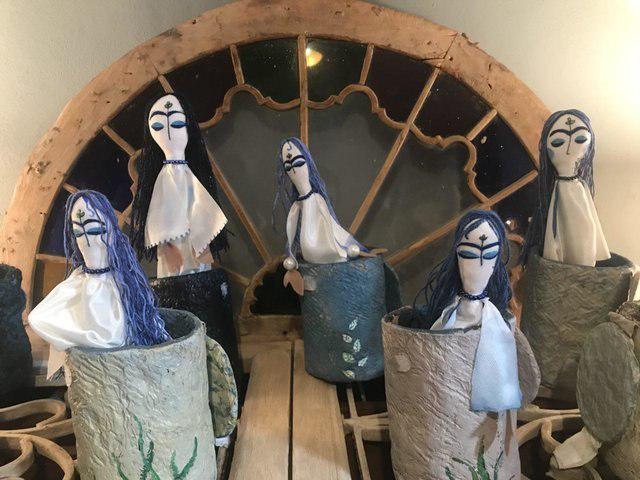It has been five years that Mojdeh Daneshpajooh has been making dolls.
“We had a lot of roses, and we decided to give them to our friends as gift. So, we made bags with cloth and filled them with flowers. Later on, they turned into Baji dolls,” she told the Iranian Students News Agency (ISNA).
“By making Baji dolls, we intended to introduce traditional and herbal medicines to children, but later on, we thought the dolls could be made in such a way that visually challenged children can use them.”
“We made some alterations in them (the doll), so that they would be able to use the dolls as well. Therefore, we designed their faces in relief, so that those unable to see would be able to touch the faces of the dolls. We also attached bells to them, so that they could be heard as well. Of course, the idea was mostly inspired by the Iran Museum of Dolls and Culture,” she added.
The doll maker and designer says she and her team also made “Southern” and “Kurdish” dolls with medicinal herbs native to the two regions.
“The Southern Baji Doll received an award at the Novel Ideas Festival organized by the Centre for Intellectual Development of Children and Young Adults,” she said.

She has studied Fabric and Clothes Design and is familiar with the costumes of ethnic groups in different regions across Iran.
“For example, the Southern Baji has a veil, with clothes made with samite. The Kurdish Bajis also have headscarves similar to the ones worn by Kurdish women,” she said.
She further noted that Baji dolls are simple.
“We would be happy to see children becoming interested in making such dolls. In the Iran Museum of Dolls and Culture, different doll making workshops are organized for children and young adults, and I think that section is very attractive. If we can encourage children to spend part of their time on making crafts during the day, we have done something positive.
She says “we spent part of our childhood in crowded families with grandfathers and grandmothers.”
“We got familiar with medicinal herbs in such an atmosphere, but the kids of the present generation are strangers to that atmosphere. It is important for us to see children are familiar with different smells and can tell the difference between the aroma of different types of herbs,” she noted.
The three-strong team, comprising Mojdeh Daneshpajooh, Hengameh Hakimian and Nargess Teimoorifard, have made other dolls, including “Chaharshanbe Khatun” (Wednesday’s Lady) and “Chellezari,” and now are working on the folklore of different regions and make dolls based on that folklore.
She also explained about stories narrated with dolls.
“We very much would like to have books along with the dolls,” she said.
The team has already registered “Baji,” and “Chaharshanbe Khatun,” but no longer produce them these days. Instead, they are focusing on their stories.

